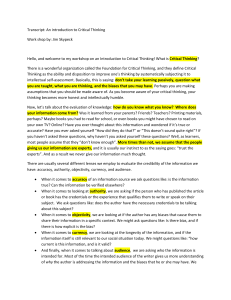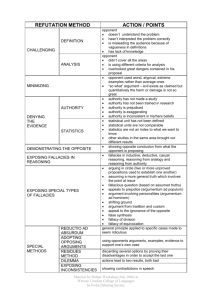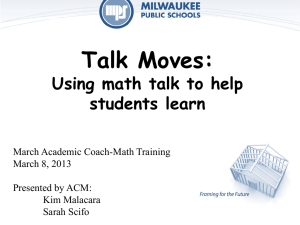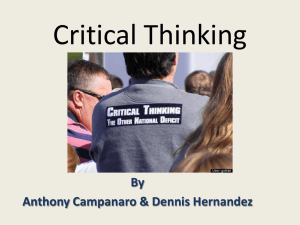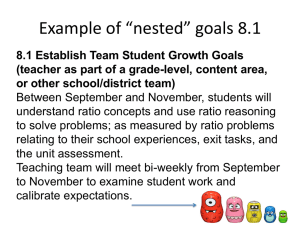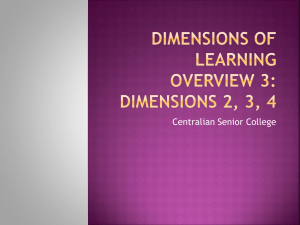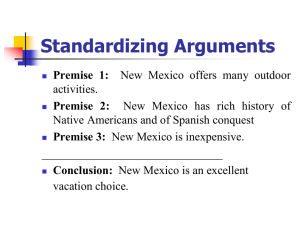Chapter 12 Reasoning, Logic, and Fallacies
advertisement
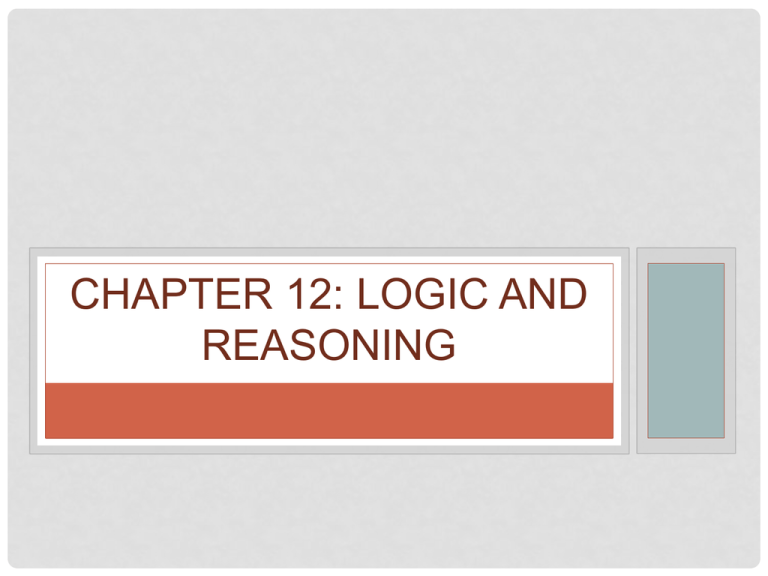
CHAPTER 12: LOGIC AND REASONING OBJECTIVES • Distinguish among several different types of reasoning and recognize faulty or misleading types. • Better adapt your use of logic to a specific audience. • Analyze your own logic to determine if your conclusions are valid. OUTLINE • 1. Evaluating Ideas: Methods of Reasoning • 2. Fallacies • 3. The Ethics of Audience Adaptation EVALUATING IDEAS: METHODS OF REASONING • Inductive Reasoning: in mathematics a technique for proving theorems in which the mathematician uses certain specific cases to help prove a general truth. Specific General • https://www.khanacademy.org/math/trigonometry/seq_induction/deductive-and-inductive-reasoning/v/u12-l1-t3-we1inductive-reasoning-1 TYPES OF REASONING • Sign Reasoning: We draw conclusions about a given situation based on physical evidence. Example: When the fire alarm is going off in the kitchen, something is burning. ANALOGIES • Reasoning by Analogy-illustration in which the characteristics of a familiar object or event are used to explain or describe the characteristics of less familiar object or event. They are often used in standardized tests. Example: Hand is to person as • • • • A. tree is to sky B. dirty is to laundry C. foot is to powder D. paw is to dog Example: Students are like worker bees because they are constantly studying and doing work for their classes. DEDUCTIVE REASONING • Deductive reasoning moves from generalizations or premises, to a specific instances. • Premises: statements on which reasoning is based. • CATEGORICAL SYLLOGISM • MAJOR PREMISE: All men are mortal. • MINOR PREMISE: Socrates is a man. • CONCLUSION: Socrates is mortal • All students go to school. • You are a student. • Therefore, you go to school. SHOULD PEOPLE BE ALLOWED TO BURN THE AMERICAN FLAG? • The First Amendment says to allow all types of expression. • Flag burning is a type of expression. • Therefore, flag burning should be allowed. • Is violence ever a just response to injustice? • Just means fair, upright, legal, reasonable • Justifiable means “excusable”. FALLACIES • Fallacies are errors in reasoning or mistaken beliefs. • Weaken your credibility as a speaker Avoid them at all cost! They include the following: Hasty generalizations False premises Circumstantial evidence Mistaken causality Misuse of numbers False analogy Ignoring the question Begging the question HASTY GENERALIZATION • Definition: The size of the sample is too small to support the conclusion. • Examples: Fred, the Australian, stole my wallet. Thus, all Australians are thieves. (Of course, we shouldn't judge all Australians on the basis of one example.) • I asked six of my friends what they thought of the new spending restraints and they agreed it is a good idea. The new restraints are therefore generally popular. • Proof: Identify the size of the sample and the size of the population, then show that the sample size is too small. Note: a formal proof would require a mathematical calculation. This is the subject of probability theory. For now, you must rely on common sense. • References: Barker: 189, Cedarblom and Paulsen: 372, Davis: 103 26 May 1995 FALSE PREMISE • A false premise is an error in deduction. • For example, parents like to tell their children,” All teenager are irresponsible. You are a teenager. Therefore you are not responsible enough to leave the house tonight. CIRCUMSTANTIAL EVIDENCE • It only suggests a conclusion; the evidence does not prove the conclusion. It seems logical that a person holding a smoking gun at the scene of a murder was the one who committed the crime. What if that person was trying to defend the person who got murdered, while the actual murderer ran away? MISTAKEN CAUSALITY • To say two events are casually related is to claim that one event brings about the other. • Example: One billiard ball strikes another and causes the second ball to bounce off the cushion at an angle. There is a causal relationship because the first ball caused the action of the second ball. • If a bus passes a church everyday at noon and the bells ring at noon, that does not mean the bus made the bells ring. PLAYING WITH NUMBERS • This involves manipulating statistics to misrepresent facts. • They numb you with numbers in order to persuade you to agree with their cause. FALSE ANALOGY • Compares two things that are not really the same. (can be literal or figurative). It assumes that because two things, events, or situations are alike in some known respects, that they are alike in other unknown respects. • example: What's the big deal about the early pioneers killing a few Indians in order to settle the West? After all, you can't make an omelet without breaking a few eggs. • example: Banning "head" shops from selling drug paraphernalia in order to curb drug abuse makes about as much sense as banning bikinis to reduce promiscuity.
